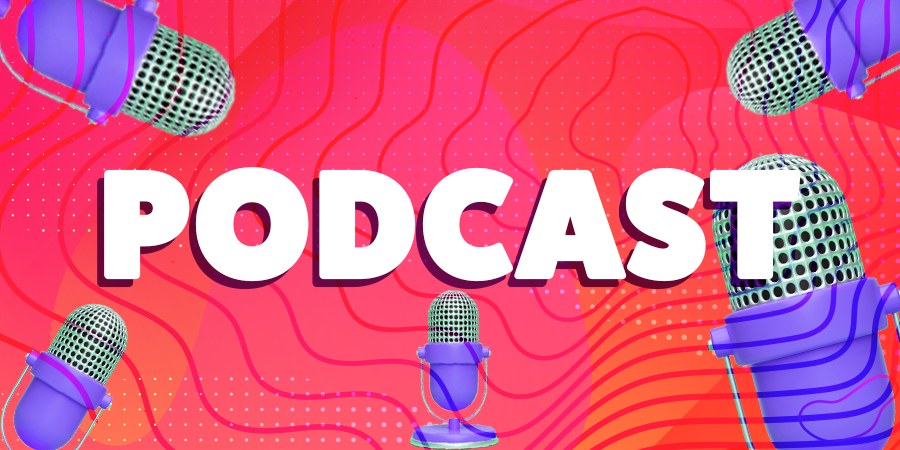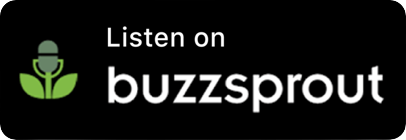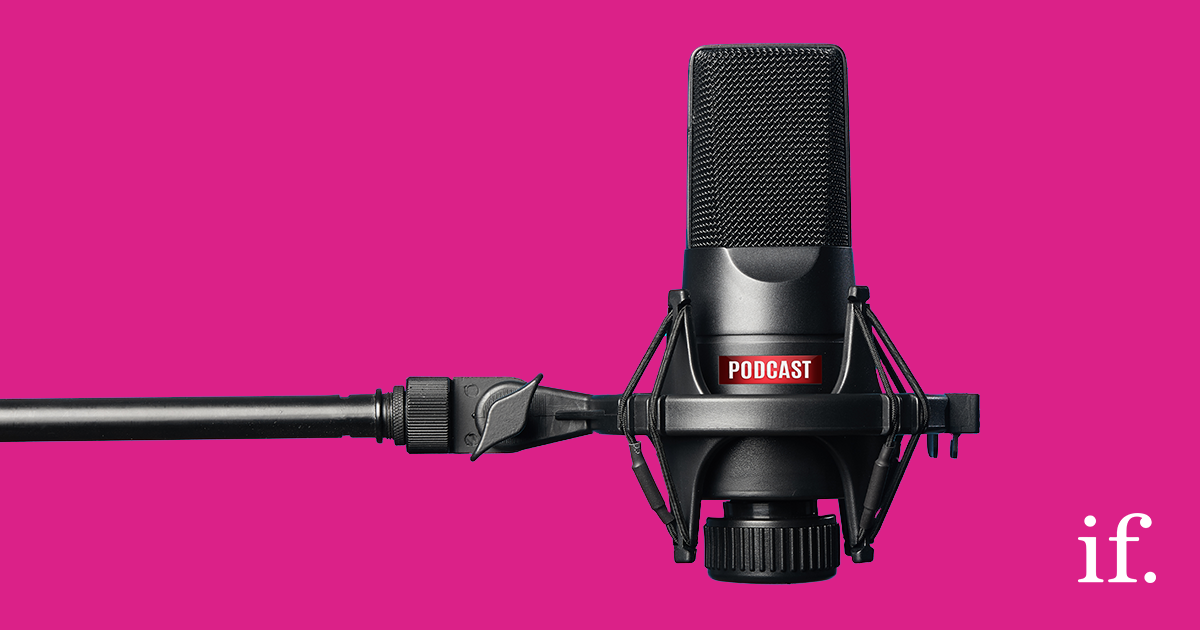Ep 51: Serious Social – The hidden complexity of social media copy
In our latest Serious Social Live we discussed the hidden complexity of social media copywriting, covering everything from accessibility concerns to tone of voice. Belle Lawrence is joined by IF Account Manager, Laurens Grisel, and self-confessed word nerd Vanessa Souris, taking you through their top tips and what to avoid when crafting thumb-stopping social copy.
If you’re after more know-how to break the social boring, subscribe now.
Full Transcript
B – Hello and welcome to another session of Serious Social Live. Today it’s a beautiful sunny day, so welcome along to the session and today we are gonna be talking about everything to do with copy on social media. Now to many, it might seem like a really easy job. You just shoot out some copy, really quick. And that might be true if you’re just writing for yourself. But for many of you guys out there I know you’re gonna be brand managers or marketing people inside brands or working for an agency and you’re writing for a brand. And that comes with a lot more complexity. So that’s what we’re gonna talk through and today I am joined by two fantastic guests. I just love having friends around on a Friday. It’s my second time having two guests; I’m loving it! So I’ll bring them into the stream now. So first up is Laurens. Welcome to your first Serious Social Live Laurens. Do you wanna introduce yourself?
L – Yeah, of course. I’m Laurens, I work at Immediate Future as an account manager, managing the day-to-day with our clients, which in my case, primarily, is our B2B client, Fujitsu. Much of my job involves creative ideation and copywriting, all of it short form. So it’s a lot of social first copy which has to be tailored to organic or paid content and even sometimes at different global territories depending on what the client requires.
B – Fab, thank you. And our second guest today, a very special guest. Doesn’t work for Immediate Future, it’s Vanessa and we’ve known each other since Friends Reunited was a social channel. And MySpace was frankly just a dream. She was always smarter than me back then and she still is! So that’s why I’ve got her on today. So Vanessa, do you wanna tell us about yourself and what you do?
V – Thank you, that was a lovely intro, even though it makes me sound ancient! Yes, I’m Vanessa. I started my career teaching English as a foreign language up to university level, but in recent years, I’ve transitioned into copyediting and proofreading. And I do work for educational publishers, but also businesses. So I edit online training modules, social media content, web content, and blog posts as well. And I’m a strong believer in plain English and making sure that your content is as readable and accessible to as many people as possible.
B – Fantastic, we love that. So, Laurens is our kind of writer expert and then Vanessa proofreading/editing. So she’s gonna be checking your work Laurens! So watch out! So when we were talking a bit about what we could explain today, or give some people some top tips and things to take away, there are a couple of specialisms that you have, Vanessa, that I think will be really interesting. So, we’ll come back to a few of them. So there’s things like cultural sensitivity, accessibility, but I think we should start with readability. Do you wanna explain a bit about what that means and the plain English bit?
V – Sure, plain English is all about writing as clearly and concisely as you can. So it doesn’t necessarily mean writing shorter things. It just means making it readable for as many people. And there are actual readability statistics that can use to help you in your writing. So in the UK, the average reading age is actually only 13. So writers should be considering that if they’re writing for a wide audience; that their content should be at this simpler level so that more people can understand it. Yeah, also a lot of websites like gov.uk and local council websites will actually write for a target age of eight or nine as well, to make it really accessible to as many people as possible.
B – Wow, 13 is so young but actually, it’s just the general population, isn’t it? So if you’re writing on social, you’re gonna reach almost anyone unless you’re targeted ads. So it’s a really important thing.
V – Exactly and there’s been a lot of research into it as well and text that is more readable and has a reading age of about 13: people tend to think is more authoritative, and it’s more trustworthy and it’s more direct for people and makes it easier for them to understand. And they’re more likely to work with you if they can understand what you’re offering.
B – So don’t overcomplicate it. And there is a tool, right we can use to…
V – In Microsoft Word, there is a tool where you can add readability statistics into your work. So, in your spelling and grammar section, tick Show Readability Statistics, then after your work, you’ve done your work, you run a spelling and grammar check, and it will bring up this screen that you can see in front of you. And you can ignore most of it, the most important one is the second last one from the bottom there, the Flesch-Kincaid Grade Level. That’s basically showing you what year group, what school year group you’re targeting. So, for a reading age of 13, you should be targeting a year group of about nine. So, it’s like year nine in school. And if you’re going for a younger reading level, so if you’re writing for something like a council or that kind of thing then what you’ve got there, four point seven, that’s like a year four reading level. Which is about right for a nine-year-old.
B – Okay, I should point out this is just an example!
V – It means it’s accessible for as many people as possible. It’s been written clearly; short sentences, not too much jargon, that kind of thing.
B – Yeah, and that is such a difficult thing. I mean, for sure when we’re writing for some of our B2B clients, Laurens, I’m sure you agree, it can be really over complicated and really difficult to convey exactly what the message is. So by the time it reaches Vanessa, she’s hoping that you’ve done loads of the work in working out what the key points are and tone of voice and stuff like that. Do you wanna tell us a bit about how you go about that?
L – Yeah, so there are loads of easy mistakes that you can make in social, right? And for us it’s we wanna constantly be as attention grabbing. Be bold and thumb-stopping and stand out in the social posts that go out every day. Every second, on average, there’s around 6,000 tweets that are tweeted on Twitter. That’s 500 million tweets a day. So if you’re gonna stand out to be ahead of the pack, you might need a powerful creative, image with a clear message or a video that makes someone stop and wanna watch. But you want to combine it with copy that is readable, free of simple mistakes. And doesn’t insult entire groups of people, which does happen more often than it should.
B – I mean, I think we can probably come up with lots of things that people do without really thinking about how it’s going to come across on social. I know you’ve got a couple of examples that I could share. So, I’ll bring the first one on and if you can have a talk about that.
L – Yeah, it’s the wrong thing to say that these one of my favourite examples, but there’s an example from Cinnabon’s Twitter that comes to mind, which is “RIP Carrie Fisher, you’ll always have the best buns in the galaxy.” You can see there. Implication being, Carrie Fisher’s hairstyle looked like the cinnamon buns from Cinnabon. That post wasn’t well received. I think it’s obvious why. But the thinking there goes beyond copywriting. That goes to common sense and thinking about what you’re gonna write before you write it. How’s this going to affect my audience? What effect will my words have? I’m also thinking of a US Department of Education one I saw, and I think we can have an image of that as well. Which was actually multiple parts where they were posting a quote and they misspelled the quoted person’s name. And then they said sorry in a separate tweet but they had a whole new typo in that one as well. Which is just a double whammy, and that’s not great.
B – It’s a double whammy particularly for the Department of Education. I would not want to be there.
L – Vanessa, do you see these kinds of errors a lot when you get copy or is this…?
V – Definitely, it’s actually amazing how many people don’t even run a simple spell check on their documents before they send something out, especially something like this. They’re banging them out really quickly. Just take the extra minute to think about it. Think what you’ve written, make sure you can, you’re okay with it before you hit send.
B – Yeah absolutely, It is really important to do all of that. All of that kind of work upfront, isn’t it? And some other thing that probably people aren’t thinking about that much because of time pressures and stuff like that is maybe accessibility. So, we’ve talked about the readability part of it, but we also want our copy to be accessible in other ways. One of the ways I was thinking of is the auto readers that you can use. So anyone who has a sight impairment will use those on a website. They even exist, obviously Word documents and things like that can read the document back to you. But if someone’s using it on a social channel, you need your copy to be readable through that auto reader for them to understand it. And the same counts for hashtags, which we were talking about, have a certain case that they’re called…
V – Camel case, so in the hashtag, each new word that you start with should start with a capital letter, and it’s called camel case. Because it’s like the humps of the camel as you go along reading. But when that’s read by an automatic reader, it will then recognise each word separately. If you have it all in lowercase, it’s just blah blah blah and it doesn’t pick up at all.
B – It doesn’t, no, and that’s such an easy change to make. Actually, it helps everyone read it better, but particularly anyone who’s using an auto reader. So that’s certainly something you should be thinking about out there. And so I think accessibility, definitely another one may be cultural sensitivity and that’s something I know that you’ve worked on a bit, and we certainly have global clients. We’re writing for global audiences and it’s something that maybe we don’t get that much time to think about or perhaps, we sometimes hope that the client has thought about that in their blog copy first. But can you tell us a bit more about what that means?
V – Yeah, sure. I’ve just come back recently from living in the Middle East, and cultural reviewing is a big part of what I do because what’s appropriate here in the UK is not necessarily appropriate in the Middle East. Things that we wouldn’t even think about can be really offensive to different cultures. So it’s something important that writers need to think about. And if you are working for bigger kind of global brands, there are sensitivity readers around who will read specifically for people with disabilities or particular ethnic groups or you know, they’re looking and making sure that your content is appropriate for everyone really, and you’re not going to offend anyone by what you’re writing.
B – And would you suggest that that’s normally done before it gets to the point of writing social copy about a blog, for example?
V – Yeah, it’s something I think everyone should have an awareness of while they’re writing. It’s quite hard, I don’t think there’s a lot of, specific training that you can do in that kind of thing. But it’s more about being aware of what you say and being aware of current issues in diversity and inclusion. There’s a lot of talk about it at the moment, I know certainly in education, but also social media as well. That it’s important just to be that everyone feels included rather than excluding certain groups.
B – Totally, and we definitely come across this when we’re talking about tone of voice and how we want to come across digitally. So I think Laurens, you were gonna talk us through some of the planning that we do with clients.
L – Yeah, I have a couple of tips too, for approaching a new social post. So, the first tip I have is the one named first thought. So the way we approach content is to start with the first thought. And if anyone was reading this, what is the main thought we want them to walk away with? Once you have that first thought, it informs everything. Your opening sentence, or if it’s very specific, your one sentence on your posts. Posts don’t have to fit the word count. It can just be a sentence and a link. Brevity, quality over quantity, all that good stuff. Once I’ve cemented the first thought, I move on to tone. Often we are identifying the key messages from an existing asset, like a blog or a white paper or even a video. So the tone on there might be completely different from what the client needs. We’re working on something now where a blog we’re promoting discusses large versus small businesses. And it could be perceived as negative towards larger business, but we have to strike a more neutral, positive tone in the post copy because our client actually works with that larger business.
B – Do they kind of present a challenge maybe or something that their audience, maybe a CTO/ CEO is gonna come across as a challenge? And we want to say, here’s the challenge, but we don’t want that to come across in a negative way.
L – Exactly, and I’m trying to stay away from naming names, but the point is that the tone might actually be at odds with the ads you’re promoting, because you have less time to get the point across. You have less time to get that challenge. So clearly explain, do you want to just get the type of tone right that the client needs you to put into practice? Or your needs depending on if you’re writing for yourself? And for that, I’ve got my third tip, which is actually understanding your voice. So, voice and tone come from the standing of the client or subject matter or yourself for us that comes from initial meetings with the clients. We create entire PowerPoint presentations that drill down to the audience and the tone of voice. That talk about avoiding specific words or specific emotions or all emojis. Even a specific or certain hashtags that absolutely cannot be used. And if you know your voice, if you know the tone that you’re gonna strike, and if you combine it with a strong first thought, you can make any copy sing.
B – It is a challenge, isn’t it, coming up with copy that’s gonna stand out and be bold and get people’s attention. And actually also to be social on social. We want people to engage. We don’t just want to post a statement and broadcast because otherwise we may as well just stick a poster on the floor or a wall and there’s no back and forth engagement, whereas that’s what social should be. So it’s definitely a lot of challenge around that, but essentially we always want to put all the planning and the prep work in ahead of creating a whole social plan. So we do spend hours on that with clients, which is something that I think in-house at brands they maybe don’t get the chance to do as often or perhaps there is challenges around doing that. S,o thanks for those tips really useful. And I’m going to come to Vanessa, and can you give us what other things that we should be taking away today to help us improve our social copy?
V – Well, I think, going back to my old bug bear the spellcheck, do make sure that you are checking what you’re putting out before you hit send. If you know there’s a grammar point or a punctuation point you’re really weak on, just spend an hour or two going over that. I get quite often things given to me and it’s like, “Oh sorry, I’m just not sure how to use apostrophes”. You know, it’s a quick fix. It’s an hour of your time. Consider it CPD. Just spend the time and that will make your work more precise. Especially if you’re trying to attract new clients, that just makes you look a bit more professional. Also, if you’re checking work yourself, Microsoft Word has the really nice Read Aloud feature, and in Apple Pages it’s Speech. So you can set it to read your text back to you. And it’s quite a good way to listen to what you’ve written rather than reading it because you quite often hear things that you wouldn’t have noticed if you were reading it yourself. I love that feature, but it is weird cause it…
B – is a robot voice!
V – Yes, I know, you just have to get over that! But it is really useful. And it’s also particularly helpful for people with dyslexia. Because listening to it, you’re gonna listen to things and hear things that you wouldn’t see if you were checking your own writing. And then my last is the old favourite – sleep on it. If you’ve got the time in your schedule, do leave it. Come back to it the next day and have another look. Because there’s always gonna be something that pops out at you that you might not have noticed the day before. That’s not just from a grammar point of view, but maybe, like Laurens was saying, the tone or the voice. Something just might not be quite right.
L – Or just the amount of times that I’ve read a piece of text and it’s way too complicated and just sleeping on it, suddenly it’s clear as day ‘cause your mind has been working on it overnight. It helps so much.
B – Yeah, actually we ran a poll on the LinkedIn event and the thing that people said they most struggled with is being concise. So I was having a think about how I do this, and tell me if you agree. Personally, I write everything that I want to say. And then I cut it and I cut it and I edit it and I cut it down until it’s as concise as it can possibly be. Either of you got any other tips about being concise?
V – I would suggest having a look at the Plain English Campaign website. There’s a lot of tips on there on what you can do, and maybe even consider doing some training in it. There’s sort of six principles that keep your sentences to a manageable length. Avoid jargon, check your spelling, grammar and punctuation – use that to help you. I can’t remember what the other three are off the top of my head but-
B – We’ll post the link there.
V – Yeah, it’s all there, and you can check it. And those are the kinds of things you can be thinking about as you’re writing.
L – Mine is a bit more a brute force. I write down everything that I wanna write. So it’s usually like 300, 400 words. And then, like Belle does, I take out the first thought, I take out what actually needs to be in it. And then I try to shorten it by instead of ‘going to’, it’s just ‘to’; stuff like that. And that’s the nitpicking stuff.
B – Miss out a few words here and there, but of course that again has its own challenges with accessibility because if it’s being used for an auto reader, missing out words can be a bit of a challenge.
V – Missing out words doesn’t necessarily make your meaning more clear. So just making your content shorter does not improve its readability. Sometimes adding a few extra words will improve readability.
B – Yeah, and there are things that we can use on social. Like If you take Twitter, for example, create a thread, instead of just a single post. And then you can explain yourself better. Great, oh that was so insightful, so useful. I’ve had lots of comments saying, “thanks for this”, “great tips”. And some were saying, they call them humpback hashtags instead of camel case! So yeah, there’s a few different names for them but that’s like a top tip for people to take away. So thanks so much for your time today. That was really excellent. And for everyone watching, thank you. And for everyone listening, thank you. You can catch up on any of our Serious Social episodes again on YouTube or Facebook as a video. We also have a podcast which is exactly the same recording. So if you prefer audio, go and listen to that pretty much anywhere you get your podcasts from. And then join us again next week; Katie has a guest with her. So we’re all about the guest life at the moment! And in the meantime, have a great weekend, thanks everyone.
V – Thanks a lot, bye.
L – Thank you.
B – Bye bye.




